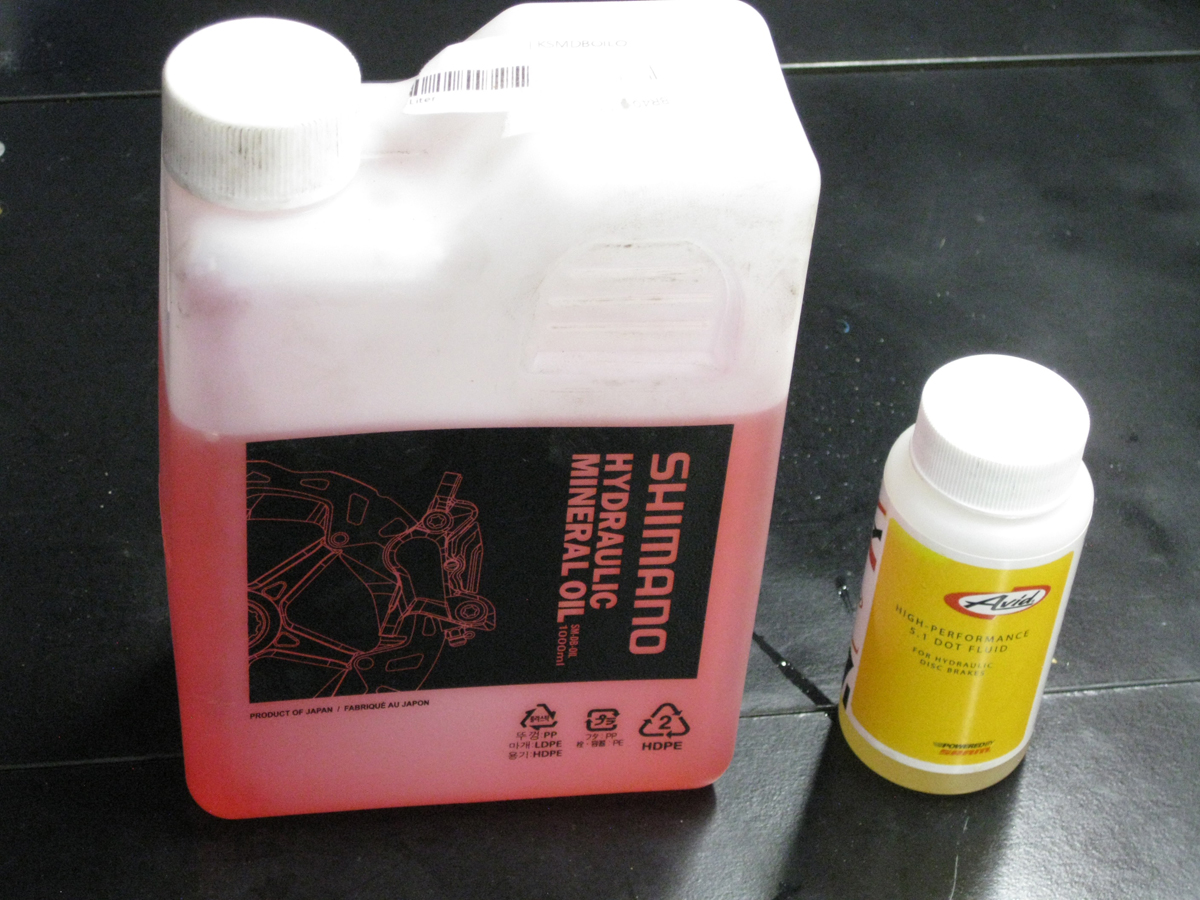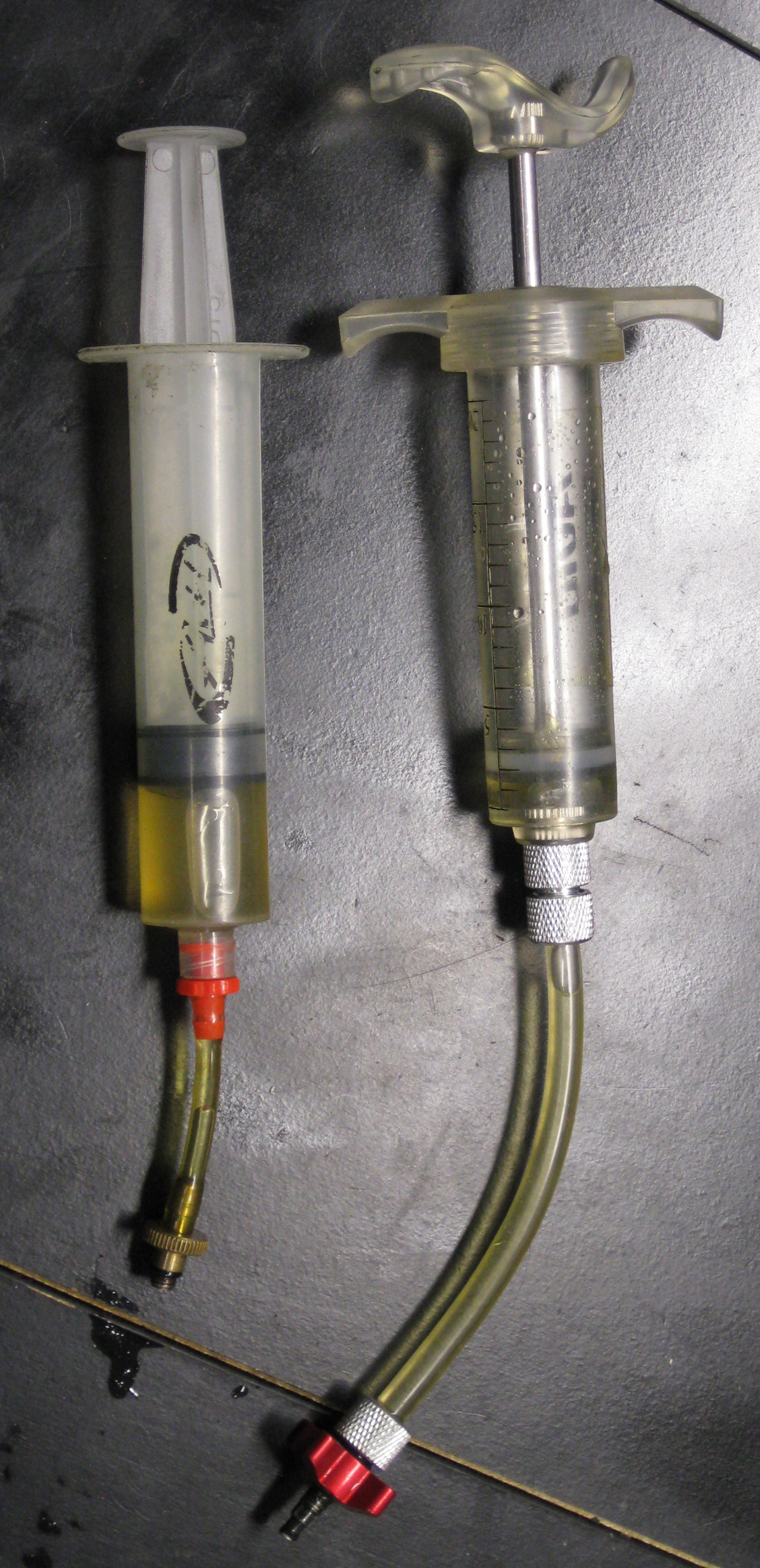By Eric Ramirez —
“My disc brakes started feeling a little sticky this spring.”
The Reason for a Brake Bleed
Over time, and especially with use, brake fluid (hydraulic fluid or mineral oil) goes bad. A sticky brake lever is not the only symptom, either. A bike owner can potentially experience several more problems, including the following:
- Increased brake-fade during long, demanding descents
- the caliper pistons may eventually get sticky – not fully retracting, preventing the brake rotor from freely passing between the pads
- your mechanic might tell you that the fluid came out black or contaminated.

Break Down with Heat & Pressure
As the work horse of our disc brakes, hydraulic fluid (or oil) is exposed to a build-up of heat. Disc brake rotors and pads flash to excessively high temperatures when actuated. The heat transfers to the caliper, then partially up the line. It does not help that most brake systems are black or dark in color. This exacerbates the heat effect on the fluid.

Heat isn’t the only culprit, though. The very act of pulling back on the brakes increases the pressure on the fluid inside the lever, line, and caliper exponentially. Although hydraulic fluid is formulated for pressure, it is also one cause of its breakdown. Mineral oil may actually turn it black from pressure, and the phenomenon isn’t uncommon in hydraulic oil.
Exposed to heat and pressure, the hydraulic fluid degrades. It is designed for this purpose, but can only perform for a finite number of hours; thus, it needs to be replaced.
It Gets Worse
If the degraded fluid remains in use, it begins to release acids and becomes corrosive. Have you ever bled your brakes and seen little black particles escape with the old fluid? Or extract silvery fluid? That material is brake system structure: line material, metals, and seal fragments.

I have struggled with brakes that have had degraded fluid through sustained periods of use, and I have had them come back for service over and over, until finally, we replace the brake. Degraded fluid will take your system beyond the point of no return. Brake calipers and levers were not designed to be rebuilt, just bled. I have held a lot of dead brakes in my hands over the years. They did not have to die though.
The Remedy? Preventative Maintenance
Often, riders treat the brakes with the approach, “If it ain’t broke, don’t fix it.” Complex mechanical parts need preventative maintenance to keep working correctly. That’s why we change the oil in our cars. That’s why we service our forks and shocks. We replace chains when they’re properly worn out.


Fixing the brake oil or hydraulic fluid problem requires bleeding the brakes at least once a season. I have had several customers who need to have it done more often than that, as they ride nearly twice as much as other cyclists. By bleeding a brake, I don’t mean exclusively purging the air from it. Bleeding is extracting air and purging old fluid via the introduction of new fluid.
Doing the Work
This is a process that you can learn on your own as there are instructional videos almost everywhere online. Bleed kits and oils or fluids are usually available from shops. But if you don’t have the time or energy to invest in doing the job a specific way, or troubleshooting potential problems, it might be best to take it to your local, expert bike mechanic.
Take-home on brake service? Bleed your brakes.
Eric has about 20 years experience working on bikes, starting in Park City. Today he’s a head technician at a shop.








